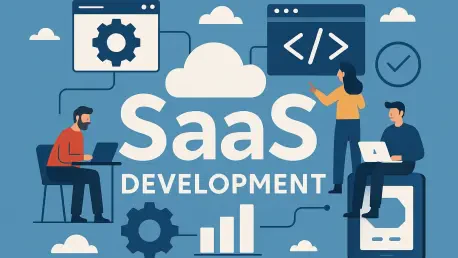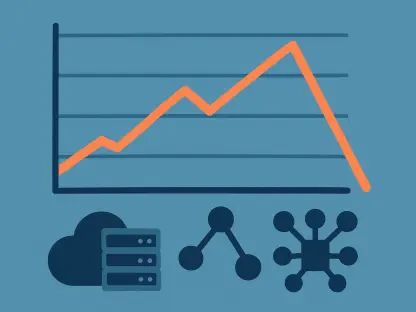In the fast-paced realm of Software as a Service (SaaS) development, technical debt represents a silent but powerful force capable of hindering growth and innovation. This pervasive issue often arises from the need for expediency, where short-term solutions are chosen over long-term gains, leading to a slow accumulation of outdated technology and methodologies. It’s not just a matter of slowing down performance; technical debt can significantly delay new feature rollouts, increase security vulnerabilities, and inflate costs, ultimately impacting a company’s competitive edge and operational efficacy. Now, with artificial intelligence (AI) being pivotal in software innovation, organizations face the challenge of effectively managing technical debt while integrating intelligent solutions into their architectures.
As modern businesses strive to remain competitive, addressing technical debt is more critical than ever. The key lies not in eradicating technical debt altogether—which is nearly impossible amidst constant technological evolution—but in strategically reducing and managing it to sustain agility and innovation. This is where AI comes into the picture, offering sophisticated tools and methodologies to streamline operations, enhance code quality, and predict potential issues before they arise. The integration of AI within SaaS platforms can not only bolster development efficiency but also create systems that are both resilient and adaptable to future demands.
Understanding Technical Debt’s Economic and Operational Impact
Technical Debt in Modern SaaS Architecture
Technical debt in SaaS architecture often manifests in overlooked code optimizations, hasty deployments, or the continued use of antiquated systems. These issues become pronounced in scalable environments where changes ripple through the ecosystem, exacerbating existing inefficiencies. When development teams prioritize shipping new features or updates rapidly, they may inadvertently introduce shortcuts—known as technical debt—that promise immediate benefits but potentially jeopardize long-term stability. The result is a buildup of underlying inefficiencies that could eventually compromise system performance, security, and scalability.
The operational impact extends further as technical debt frequently results in significant maintenance overhead and a stalling of technological advancements. As systems become burdened with inefficiencies, adopting new, often necessary technologies like AI becomes increasingly complicated. This integration challenge is compounded by the need to maintain current services while transitioning to enhanced solutions, creating an additional layer of complexity. Technical debt not only delays the adoption of AI and other advanced technologies but also imposes substantial economic costs, diminishing resources that could otherwise be invested in innovation and growth.
Economic Consequences of Unchecked Technical Debt
The economic ramifications of unchecked technical debt are profound, particularly for enterprises that rely heavily on SaaS models. With businesses across the U.S. grappling with over $2.4 trillion in technical debt costs annually, the necessity for strategic interventions cannot be overstated. This debt, often invisible but pervasive, hampers operational budgets by inflating maintenance costs and stalling essential technological updates. As a result, companies frequently allocate substantial portions of their financial resources to patching existing issues rather than driving forward innovation or improving client offerings.
Uncontrolled technical debt can also deter investor confidence, as it signals potential monetary drainage and inefficiency, thus affecting a company’s market valuation and growth potential. Beyond direct financial impacts, the reputational damage resulting from repeated service downtimes and security vulnerabilities can lead to a loss of customer trust and abandonment. These risks necessitate a systematic approach to not only manage existing debt but also to proactively prevent its escalation, ensuring both the financial health and market competitiveness of SaaS enterprises.
Leveraging AI for Technical Debt Reduction
AI’s Role in Identifying and Addressing Core Issues
Artificial intelligence is revolutionizing how organizations address technical debt, particularly in its capacity to pinpoint core inefficiencies within complex systems. Through the use of sophisticated algorithms and machine learning models, AI can thoroughly analyze codebases, detect potential vulnerabilities, and recommend optimizations that align with both architectural goals and performance standards. This ability to rapidly identify problem areas that might be overlooked by human developers is crucial in reducing the operational lag associated with technical debt.
By offering predictive insights, AI assists developers in preemptively resolving issues even before they manifest in real-world applications. It encourages a proactive rather than reactive approach to software maintenance, where potential disruptions are mitigated ahead of time. For SaaS providers, this capability translates into reduced downtime, improved user experiences, and more efficient resource allocation. Integrating AI effectively enhances existing development processes, reinforces code stability, and ensures more consistent delivery of high-quality software services.
Integrating AI into SaaS Ecosystems
For AI tools to effectively reduce technical debt, their integration into existing SaaS ecosystems must be seamless and intuitive. This involves more than simply deploying AI solutions; it requires a fine-tuned orchestration with current development workflows and tools such as version control systems, IDEs, and CI/CD pipelines. Central to this integration are mechanisms like REST APIs, CLI tools, and IDE plugins, which enable developers to automate processes, maintain rigorous code quality checks, and implement robust security protocols.
At its core, successful AI integration mandates a balance between technological advancement and workflow continuity. Developers need transparent recommendations from AI systems to ensure easy adoption and trust in automated processes. For instance, AI solutions should provide detailed insights and justifications for suggested code changes, allowing developers to see the reasoning and learn from AI analysis. Such transparency facilitates smoother transitions into AI-enhanced development practices, ensuring that the benefits of reduced technical debt are realized without disrupting ongoing operations.
Balancing AI Utilization with Technical Debt Management
Preventing AI-Induced Technical Debt
While AI can be instrumental in reducing existing technical debt, its implementation might inadvertently generate new debt if not properly managed. Issues arise when AI-generated code is accepted without sufficient human oversight, leading to unchecked errors and introducing complexities in the codebase. To combat this, organizations are encouraged to impose limitations on the adoption of auto-generated code and enforce rigorous manual reviews as safety checks against potential pitfalls introduced by AI.
Adopting a strategic framework like T.R.U.S.T.—emphasizing Transparency, Reliability, Usability, Security, and Traceability—ensures organizations maintain control over AI implementations. This framework guides the creation of AI policies and standards that promote responsible use, safeguarding against the escalation of technical debt while supporting sustainable innovation. By maintaining oversight and applying structured governance to AI deployment, enterprises prevent the descent into new technical liabilities and foster a development culture centered on accountability.
Establishing Responsible AI Practices for Long-Term Success
Sustaining a competitive edge in the evolving SaaS landscape requires responsible AI practices that align with established technological frameworks and objectives. This alignment assures that AI tools become enablers of efficiency rather than sources of added complexity or confusion. By leveraging predictive software, companies gain foresight into system behaviors and maintenance needs, enabling timely upgrades and minimizing potential downtimes—critical components in maintaining agile and reliable SaaS offerings.
Embedding AI within CI/CD processes streamlines development activities, allowing proactive addressing of issues and facilitating real-time feedback on code changes. These strategies underpin an adaptive and responsive SaaS environment, bolstering innovation while minimizing the risk of accumulating technical debt. Through responsible AI application and diligent integration strategies, organizations are poised to not only manage existing technical debt but also to capitalize on AI’s potential to drive transformative changes across their platforms.
Building a Sustainable Future with AI and Reduced Technical Debt
In recent times, managing technical debt has become a crucial component of successful SaaS development. Integrating AI presents an exceptional opportunity to manage technical debt—the dual benefit of enhancing software quality while maintaining operational agility and competitiveness. By conscientiously deploying AI within SaaS ecosystems, companies can address existing technical liabilities, ensuring that software remains adaptable to tomorrow’s needs. However, this requires a dedicated effort to align AI implementations with sound governance frameworks and ongoing oversight to mitigate potential risks.
The path forward lies in an intentional melding of AI capabilities with established development practices, avoiding the pitfalls of excessive reliance on automated solutions without strategic foresight. Emphasizing explainability, traceability, and security in AI operations promotes trust and accountability, fostering an environment where technological advancements and operational realities are in harmony. As enterprises continue to embrace AI, they must do so with a balanced perspective that welcomes innovation while preserving the resilience and sustainability of their technological endeavors. Through such measured approaches, the enduring challenges of technical debt can be addressed and resolved, paving the way for a future marked by steady growth, innovation, and stability in a competitive digital age.









